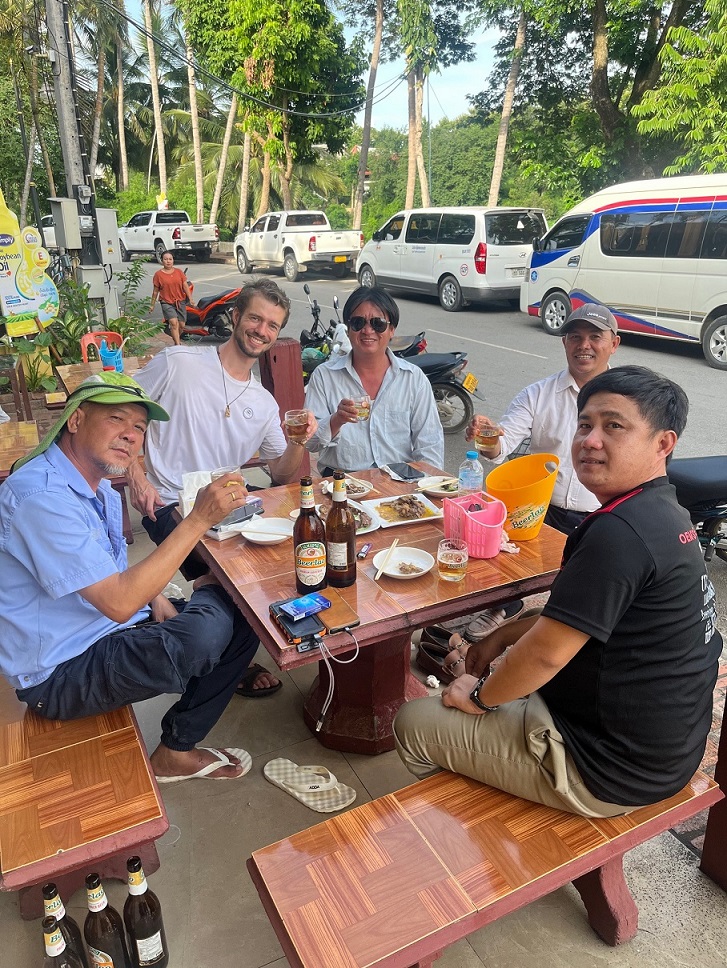Drinking in Laos can be an exciting part of the cultural experience, but it also carries risks, particularly the danger of methanol poisoning.
While Laos offers beautiful landscapes, a rich cultural heritage, and a welcoming atmosphere, travelers need to be cautious when consuming alcohol, especially locally made beverages.
Methanol, a toxic alcohol, can sometimes be found in homemade or unregulated alcoholic drinks, and consuming it can lead to severe health consequences.
What is Methanol Poisoning?
Methanol poisoning occurs when methanol, a type of alcohol used in industrial products, is consumed. Unlike ethanol, the alcohol found in most alcoholic beverages, methanol is toxic to humans. It is metabolized in the body into formaldehyde and formic acid, both of which are extremely harmful and can cause damage to vital organs, including the liver and kidneys. In severe cases, methanol poisoning can lead to blindness, organ failure, or even death.

In Laos, methanol poisoning is a potential risk when drinking local alcohol, especially homebrewed spirits like Lao Lao, a rice whiskey. Although Lao Lao is a popular beverage, it is sometimes produced without proper quality control, which means it could contain dangerous levels of methanol.
You do not have to worry about the Street Food of Laos.
Why is Methanol Poisoning a Risk When Drinking in Laos?
The primary risk of methanol poisoning comes from consuming homemade or unregulated alcohol. In Laos, local distillers often create rice whiskey and other spirits in small batches. These homemade drinks may not undergo proper distillation processes, leading to potential contamination with methanol. Since methanol is cheaper and more easily accessible than ethanol, unscrupulous producers may use it to increase the alcohol content or as a cheap substitute for more expensive ethanol.
While commercially available alcohol, such as beer and imported spirits, is typically safe to drink, there is always a risk when purchasing alcohol from street vendors, local markets, or unlicensed establishments. In some rural areas, travelers may encounter unregulated alcohol sources, making it important to be cautious about what you consume.
Symptoms of Methanol Poisoning
If you’ve been drinking in Laos and suspect methanol poisoning, it’s crucial to recognize the symptoms. Symptoms can start within 12 hours of consumption and include:
- Headache
- Dizziness or confusion
- Nausea and vomiting
- Blurred vision or difficulty seeing
- Abdominal pain
As methanol poisoning progresses, symptoms can worsen, potentially leading to organ failure, seizures, difficulty breathing, and even coma. In some cases, it may be mistaken for alcohol intoxication or a hangover, so it’s essential to be vigilant if you suspect contamination.
How to Avoid Methanol Poisoning While Drinking in Laos
If you plan on drinking in Laos, taking precautions is essential. Here are a few ways to protect yourself from the risks associated with methanol poisoning:

1. Stick to Commercial Alcohol
The safest option when drinking in Laos is to stick with commercial alcohol, such as beer, wine, or imported spirits. These products are regulated and generally free from contamination. Avoid buying alcohol from street vendors or unlicensed shops, as these may be more likely to contain dangerous additives like methanol.
2. Be Careful with Local Spirits
Lao Lao, the traditional rice whiskey of Laos, is a beloved drink, but it is often produced in small, unregulated batches. If you want to try Lao Lao, make sure to buy it from a reputable vendor, preferably one that can confirm it was produced by a licensed distillery. Always inquire about the source and quality of the alcohol before you drink it.
3. Avoid Homemade Alcohol
Homemade alcohol, including spirits made by locals for personal or small-scale sale, is a major source of methanol contamination. If you’re not sure about the safety of the alcohol, it’s better to avoid it. Stick to beverages from reputable sources, especially in rural or remote areas.
4. Look for Signs of Contamination
Methanol-contaminated alcohol can sometimes have unusual characteristics. It may appear cloudy or have a strange color. While this is not always an indication of contamination, it’s best to be cautious if the alcohol looks off. If you notice anything unusual about the appearance or smell of the drink, it’s safer to decline it.
5. Recognize the Symptoms of Poisoning
If you start to feel unwell after drinking, be alert to the symptoms of methanol poisoning. Early symptoms can mimic a hangover, so it’s essential to pay attention to any visual disturbances or severe abdominal pain. If you experience any of these symptoms, seek medical help immediately.
6. Seek Immediate Medical Attention
If you suspect methanol poisoning, time is crucial. Medical treatment can significantly improve your chances of recovery. Methanol poisoning can be treated with antidotes like fomepizole or ethanol, which inhibit the body’s metabolism of methanol. In severe cases, hemodialysis may be required to clear methanol from the system.
The Curse of Vang Vienh
And sadly the biggest takeaway for avoiding issues with drinking in Laos is that of being careful in Vang Vienh. In reality we only learnt about the recent deaths of the people here because there were so many at one time. In reality this happens a lot.
Most though tend to die through drugs, or misadventure. This is not to say you should not come here, but do keep your whits about you in a place where drugs are sold openly and at bars. This is not “allegedly”, or I have seen it myself.
Conclusion
While drinking in Laos can be an enjoyable part of your travel experience, it’s essential to be cautious about the risks of methanol poisoning. Stick to reputable alcohol sources, ask questions about where your drinks come from, and be aware of the symptoms of poisoning. If you are drinking in Laos, it’s always better to err on the side of caution to ensure your safety.
Click the link to check out our tours to Laos.





